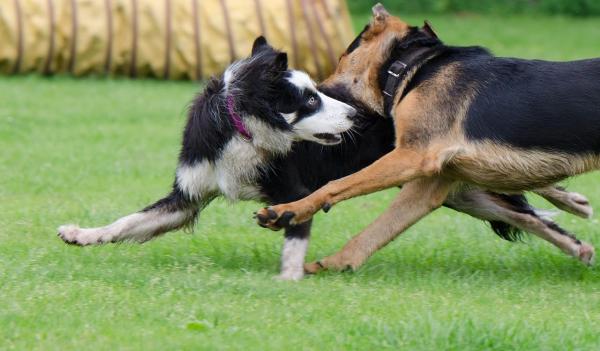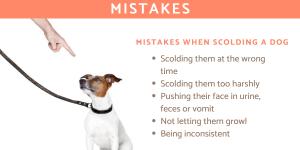Bite Inhibition in Dogs



See files for Dogs
Bite inhibition is perhaps the cornerstone of the socialization process of any dog: a dog that has not learned to inhibit their bite is a dangerous dog that can cause damage even when playing. On the other hand, a dog that knows how to inhibit their bite can prevent damage even when it bites, in order to warn that it is angry.
The critical period for bite inhibition ends when a puppy is around four and a half months old, when it changes its teeth. After that, it will be very difficult to teach your dog to inhibit their bite. Trainers commonly talk about dogs with soft and hard mouths. Dogs with soft mouths have learned to inhibit their bite and are able to use her mouth to hold things without damaging them.
In order to help you, in this AnimalWised article we'll go over the things you should consider about bite inhibition in dogs, as well as some training tips.
General considerations
When teaching your dog bite inhibition, there are some general aspects to take into account:
- Your puppy should have dog playmates. Puppies learn to regulate the force of their bites when playing with other dogs, so this aspect is critical. The principle is simple: if your dog bites too strongly, the other puppy will whine and end the game for a few seconds. Playing without hurting the other is positively reinforced (the game continues), and playing roughly is punished negatively (ending the game).
- Among the basic dog commands you should teach your dog you must include "release" or "enough". This order does not help regulate the strength of the dog's bites, but it will get your dog to stop biting something.
- Teach your dog to bite your hands playfully. Although some trainers do not recommend doing this, it can be very useful for puppies younger than four months old. This will teach your puppy that humans are more sensitive than dogs, and your puppy will learn to regulate their bite differently when playing with humans than when playing with dogs.

Teaching a puppy bite inhibition
In order to teach your puppy to bite your hands in a playful manner, start playing with them and let them bite your hands. The moment it causes you pain, say "No" and stop the game by removing your hand. Some trainers suggest that instead of saying "No" you say "Ouch" in a high voice, making them notice your pain.
Regardless of the word you use, the most important thing is that you end the game at the exact moment your dog bites too hard. Timing is very important in this case: if you end the game when your dog is biting gently but continue when they bite you hard, you are teaching them to bite hard.
When you stop the game, ignore your dog for a time. This way, negative punishment will take effect. However, don't isolate your dog or anything like that: simply stop the game, ignore your dog for half a minute or longer, and then resume the game again.
Repeat the procedure for a while and practice it in different places in order to generalize the learning. Get other people from the family or your friends to do the same, and soon your dog will understand that all humans are sensitive.
If you cannot stop your dog from biting by saying "No", teach them the "release" order first and use it to end the game. In this case, do not ignore your dog for a few seconds since you'd be punishing them when they are obeying the order. Simply stop the game and resume playing when your dog calms down.
If you have to use the "Release" order a lot, something is wrong. This order will only stop your dog from biting you when it is excited. It should not be the way to teach bite inhibition except on very rare occasions.
Tips to teach your dog bite inhibition
Now that you know the basics of dog inhibition in dogs, there are some extra tips and considerations you should bear in mind.
- Children: Do not allow young children to teach bite inhibition to your dog, because it could end up disastrously. Children do not have the necessary control to carry out the exercise properly, and the puppy is likely to end up learning that it alright to bite down hard to make the game more fun.
- Punishment: Never physically punish your puppy for biting hard. This will only generate fear or aggression. Punishment will not teach them to inhibit their bite, but not to bite when playing. Of course, when they decide to bite as an adult, they will do so with great strength.
- Impulses: Another reason not to use physical punishment is that puppies cannot completely control their impulses until they are a little older. Even if your dog has learned to inhibit their bite, sometimes they will be too excited to realize when they bite too hard. They will control their bite when they are older than four months old - with the right training, of course.
- Classes: If there are classes for puppies in your city, sign up before your puppy reaches four and a half months old. Puppy classes are perhaps the best way to teach bite inhibition, because your dog will play with other puppies. Also, you will have the support of the instructor and other assistants and you can also make lots of friends.

To learn more about training puppies beyond bite inhibition, don't miss the following article on how to train your dog.
If you want to read similar articles to Bite Inhibition in Dogs, we recommend you visit our Basic education category.







